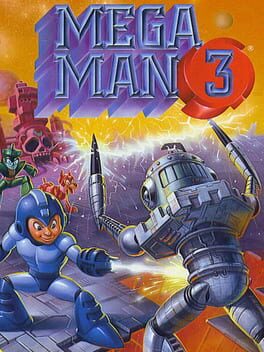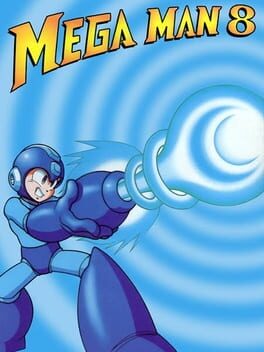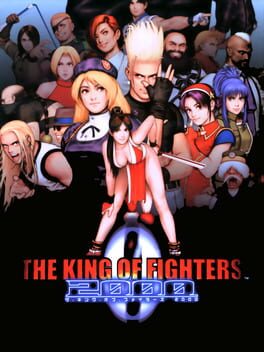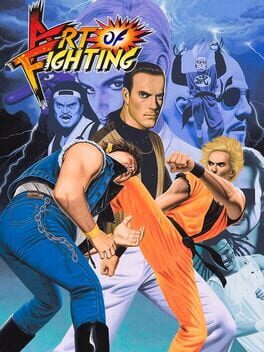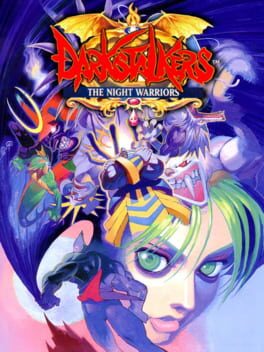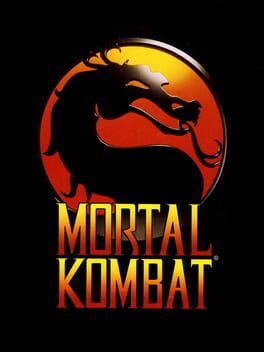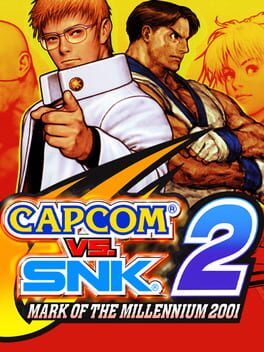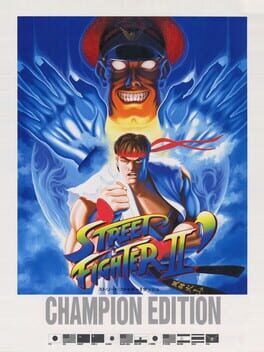Tamatou
90 Reviews liked by Tamatou
Mega Man 3
1990
Mega Man 3
1990
Mega Man 3
1990
What the hell was Dr Light thinking when making Proto Man?
A battle robot that just jumps around like a bitch?
Imagine being a conscious robot with free-thought, designed by your creator, while he was drunk and thought it would be funny to make you never stop jumping, only to throw you in the trash after he sobered up and realised how useless you were, then started work on another robot.
I'd seek revenge too. Too bad I wouldn't be able to kill him because I can't stop FUCKING JUMPING
A battle robot that just jumps around like a bitch?
Imagine being a conscious robot with free-thought, designed by your creator, while he was drunk and thought it would be funny to make you never stop jumping, only to throw you in the trash after he sobered up and realised how useless you were, then started work on another robot.
I'd seek revenge too. Too bad I wouldn't be able to kill him because I can't stop FUCKING JUMPING
Mega Man 8
1996
Mega Man 8
1996
It’s common these days to immediately clown on the usage of terms like “soul” and “passion” when describing the creation and production of media. However, one game I could never not describe as such is KOF 2000. Mainly because of the many issues going down at SNK during development, it’s a game that, artistically, screams out to me so much.
I mean, this game was made in the middle of SNK filing for bankruptcy, for Christ’s sake. The devs knew they were going down under. This game was not going to be the miracle that would save them from this terrible situation. And yet, the team still dedicated every single ounce of their energy that they would for really any other game they made. It has the arranged soundtrack, a console port, jaw droppingly good stages and character animations, it’s all here and accounted for. But what makes things even better is you can really see this game as a somewhat somber farewell to the original SNK. The extra strikers are tons of homages to KOF, Fatal Fury, Metal Slug, Samurai Shodown, etc. The soundtrack of this game is also so tonally perfect, both compositionally and name wise. So many tracks have such a sense of finality to them, like KD-0084, Inner Shade, Ice Place, Zero, and of course Goodbye Esaka, a track literally naming itself as SNK’s final goodbyes to it’s home station in Osaka, Japan.
With this context, the destruction of Southtown in the ending is very clearly representative of the state of the company. The place where it all began back with SNK’s first fighting game Fatal Fury, completely in shambles. And yet there’s still a feeling of hope to all this destruction. A lead to a new beginning, perhaps…?
Gameplay wise it’s a huge step up from ‘99, pushing the striker system to its limits while also having a more solid roster and game feel. I really like the new characters, especially Kula my beloved <3. Some strikers are absolutely NASTY in this game, and it’s horribly imbalanced, but it’s stupid fun. The presentation with the gorgeous stages and UI design is of the finest quality, which is saying a lot knowing the production values of the previous entries. Even with plenty of the reused character sprites, there’s also lots of new ones that are of the same quality, which really goes to show how well the old ones hold up.
Sometimes this is my favorite KOF game, sometimes it’s 02UM, but at the end of this day it’s definitely up there for me and a game I have the utmost respect for. The developers cared TOO MUCH making this game, and I applaud them for their effort despite the situation surrounding SNK. I’ll always love KOF 02, 02UM, and XI, but 2000 is the last true KOF game from an artistic standpoint. And what a way to go out. Holy fuck.
I mean, this game was made in the middle of SNK filing for bankruptcy, for Christ’s sake. The devs knew they were going down under. This game was not going to be the miracle that would save them from this terrible situation. And yet, the team still dedicated every single ounce of their energy that they would for really any other game they made. It has the arranged soundtrack, a console port, jaw droppingly good stages and character animations, it’s all here and accounted for. But what makes things even better is you can really see this game as a somewhat somber farewell to the original SNK. The extra strikers are tons of homages to KOF, Fatal Fury, Metal Slug, Samurai Shodown, etc. The soundtrack of this game is also so tonally perfect, both compositionally and name wise. So many tracks have such a sense of finality to them, like KD-0084, Inner Shade, Ice Place, Zero, and of course Goodbye Esaka, a track literally naming itself as SNK’s final goodbyes to it’s home station in Osaka, Japan.
With this context, the destruction of Southtown in the ending is very clearly representative of the state of the company. The place where it all began back with SNK’s first fighting game Fatal Fury, completely in shambles. And yet there’s still a feeling of hope to all this destruction. A lead to a new beginning, perhaps…?
Gameplay wise it’s a huge step up from ‘99, pushing the striker system to its limits while also having a more solid roster and game feel. I really like the new characters, especially Kula my beloved <3. Some strikers are absolutely NASTY in this game, and it’s horribly imbalanced, but it’s stupid fun. The presentation with the gorgeous stages and UI design is of the finest quality, which is saying a lot knowing the production values of the previous entries. Even with plenty of the reused character sprites, there’s also lots of new ones that are of the same quality, which really goes to show how well the old ones hold up.
Sometimes this is my favorite KOF game, sometimes it’s 02UM, but at the end of this day it’s definitely up there for me and a game I have the utmost respect for. The developers cared TOO MUCH making this game, and I applaud them for their effort despite the situation surrounding SNK. I’ll always love KOF 02, 02UM, and XI, but 2000 is the last true KOF game from an artistic standpoint. And what a way to go out. Holy fuck.
Art of Fighting
1992
Well, now that I have dipped my toe into the world of Fatal Fury a couple times at this point, I figured I may as well go ahead and check out another fighting series from SNK that they have made back in the past. So, naturally, the most logical choice to make would be with a series that is a prequel to Fatal Fury, Art of Fighting. Unlike Fatal Fury and, to an extent, The King of Fighters, I had never heard of Art of Fighting until about 1 or two years ago, when I was checking out what other titles SNK had made aside from Metal Slug. I was well aware of The King of Fighters and Fatal Fury at that point, but to find another series that takes place before those two, as well as one that is half of the foundation of The King of Fighters, was a pleasent surprise. So, after playing through the first game in the series, I wasn’t surprised to find that it was essentially the same as Fatal Fury, except with plenty of changes… and I am completely ok with that. It does carry the same weight, feeling, and fun that a typical fighting game should carry, while also introducting new elements to the genre at the time, as well as some other elements that I wish more fighting games had as a whole.
The story is fairly detailed, with a focused plot following just a few characters, rather then a bunch of characters coinciding with each other, but it is a simple kidnapping story, so it could’ve been done better (not to mention, it could’ve not ended on a cliffhanger), the graphics are just as good as other fighters from SNK, while adding more detail and character with elements such as seeing the damage enemies can do on characters’ faces, as well what is shown in the bonus stages, and having the camera constantly zooming in and out while the fight is going, which does make it feel more alive, the music was alright, not really being all that memorable or unique, but it fits well alongside the many fights that you will be a part of, the controls are about the same as Fatal Fury, and they work well enough, even if, much like plenty of other fighting games of the time, they can be pretty stiff at points, and the gameplay goes about what you would expect from an SNK fighting game, but it does stand out from other fighters at the time for several reasons.
The game is your typical 2D fighter, where you take control of one of ten fighters, take on plenty of opponents in 1-on-1 fights, deal many different punches, kicks, grabs, and combos to deal the smackdown on your foes, and take on plenty of bonus stages to not only get more points, but also gain new moves, upgrades, and techniques if you manage to complete the bonus games properly. For the most part, it is all what you come to expect, but going back to the bonus stages, I do appreciate what they do with them here. Many fighting game fans are probably very familiar with bonus stages, and while they can be fun, most would probably agree that most before this don’t serve any purpose rather then just… you know… points. But, in this game, you actually can earn stuff from mastering them, which makes them all the more important and satisfying to master.
In addition, Art of Fighting introduces several elements that would become a staple of the fighting genre, such as the Super Moves. Sure, you have to unlock them from the bonus stages, but whenever you manage to pull these moves off, you deal MASSIVE damage to your opponent, and it feels very satisfying to do so… or at least, it looks like it does, because I myself wasn’t able to unlock any of them (I suck). While that is all cool and all, one inclusion that I am much more interested in rather then that would be with the new Spirit Gauge. Throughout fights, whenever you use special moves against your opponent, this spirit gauge will go down, and will make the special moves weaker the lower it is, with you needing to charge it up to get that power back. This may seem like a dumb idea, and many may wonder why this is an inclusion to begin with, but to be honest, I actually love this mechanic. Many fighting games often fall into the same trapping of, when it comes to beating your opponent, you would only need to find one special move, and spam it over and over again, which is satisfying to pull off, but if you are on the opposite end of these moves, it would feel completely unfair. With this, it helps makes things more balanced and makes it so that you can’t just spam your way to victory, which may be a bit of hassle for some, but for me, it is an inclusion that I greatly appreciated.
However, not everything about Art of Fighting works as well as you think. This may just be a problem to me, but I did mention earlier that you could play as up to ten fighters in this game, although, when playing through Arcade Mode, you can only play as two, which really sucks, not gonna lie. Sure, I completely understand why this was done, because the story is focused solely on Ryo and Robert saving Yuri, so having the option to select any of the other characters would make no sense in that context, but still, they couldn’t have just made an alternate non-canon scenario for each of the other fighters so you could play as them there? I dunno, again, that just may be a me thing. Other then that though, you may be expecting me to bring up how this game has fighting game syndrome, but… honestly… I didn’t find this game as difficult as other fighting games. Trust me, I got my ass kicked plenty while playing through, but compared to something like Mortal Kombat or the original Fatal Fury, this game is much easier then you think, even though it can still be quite a challenge at times, so I was pretty thankful for that.
Overall, despite a limited roster for arcade mode, I found Art of Fighting to be a pretty good time, with several new interesting and unique mechanics, some of which would become a staple of the fighting genre, and while I wouldn’t say it is as good as something like… sigh... Street Fighter II (I’m sorry, I don’t wanna keep making that comparison, but I have to), but it can still be a fun time. I would recommend it for fans of fighting games, as well as those who are fans of the Fatal Fury series, but for others, you don’t need to check it out, unless you wanna check out where Super Moves originated from. But anyway, before I go, since I mentioned Street Fighter, I need to point out something… the continue screen and the character select screen of this game is literally almost an EXACT COPY of the ones from Street Fighter II. Now, I don’t wanna assume that SNK was copying Capcom completely… but they did copy Capcom completely there.
Game #340
The story is fairly detailed, with a focused plot following just a few characters, rather then a bunch of characters coinciding with each other, but it is a simple kidnapping story, so it could’ve been done better (not to mention, it could’ve not ended on a cliffhanger), the graphics are just as good as other fighters from SNK, while adding more detail and character with elements such as seeing the damage enemies can do on characters’ faces, as well what is shown in the bonus stages, and having the camera constantly zooming in and out while the fight is going, which does make it feel more alive, the music was alright, not really being all that memorable or unique, but it fits well alongside the many fights that you will be a part of, the controls are about the same as Fatal Fury, and they work well enough, even if, much like plenty of other fighting games of the time, they can be pretty stiff at points, and the gameplay goes about what you would expect from an SNK fighting game, but it does stand out from other fighters at the time for several reasons.
The game is your typical 2D fighter, where you take control of one of ten fighters, take on plenty of opponents in 1-on-1 fights, deal many different punches, kicks, grabs, and combos to deal the smackdown on your foes, and take on plenty of bonus stages to not only get more points, but also gain new moves, upgrades, and techniques if you manage to complete the bonus games properly. For the most part, it is all what you come to expect, but going back to the bonus stages, I do appreciate what they do with them here. Many fighting game fans are probably very familiar with bonus stages, and while they can be fun, most would probably agree that most before this don’t serve any purpose rather then just… you know… points. But, in this game, you actually can earn stuff from mastering them, which makes them all the more important and satisfying to master.
In addition, Art of Fighting introduces several elements that would become a staple of the fighting genre, such as the Super Moves. Sure, you have to unlock them from the bonus stages, but whenever you manage to pull these moves off, you deal MASSIVE damage to your opponent, and it feels very satisfying to do so… or at least, it looks like it does, because I myself wasn’t able to unlock any of them (I suck). While that is all cool and all, one inclusion that I am much more interested in rather then that would be with the new Spirit Gauge. Throughout fights, whenever you use special moves against your opponent, this spirit gauge will go down, and will make the special moves weaker the lower it is, with you needing to charge it up to get that power back. This may seem like a dumb idea, and many may wonder why this is an inclusion to begin with, but to be honest, I actually love this mechanic. Many fighting games often fall into the same trapping of, when it comes to beating your opponent, you would only need to find one special move, and spam it over and over again, which is satisfying to pull off, but if you are on the opposite end of these moves, it would feel completely unfair. With this, it helps makes things more balanced and makes it so that you can’t just spam your way to victory, which may be a bit of hassle for some, but for me, it is an inclusion that I greatly appreciated.
However, not everything about Art of Fighting works as well as you think. This may just be a problem to me, but I did mention earlier that you could play as up to ten fighters in this game, although, when playing through Arcade Mode, you can only play as two, which really sucks, not gonna lie. Sure, I completely understand why this was done, because the story is focused solely on Ryo and Robert saving Yuri, so having the option to select any of the other characters would make no sense in that context, but still, they couldn’t have just made an alternate non-canon scenario for each of the other fighters so you could play as them there? I dunno, again, that just may be a me thing. Other then that though, you may be expecting me to bring up how this game has fighting game syndrome, but… honestly… I didn’t find this game as difficult as other fighting games. Trust me, I got my ass kicked plenty while playing through, but compared to something like Mortal Kombat or the original Fatal Fury, this game is much easier then you think, even though it can still be quite a challenge at times, so I was pretty thankful for that.
Overall, despite a limited roster for arcade mode, I found Art of Fighting to be a pretty good time, with several new interesting and unique mechanics, some of which would become a staple of the fighting genre, and while I wouldn’t say it is as good as something like… sigh... Street Fighter II (I’m sorry, I don’t wanna keep making that comparison, but I have to), but it can still be a fun time. I would recommend it for fans of fighting games, as well as those who are fans of the Fatal Fury series, but for others, you don’t need to check it out, unless you wanna check out where Super Moves originated from. But anyway, before I go, since I mentioned Street Fighter, I need to point out something… the continue screen and the character select screen of this game is literally almost an EXACT COPY of the ones from Street Fighter II. Now, I don’t wanna assume that SNK was copying Capcom completely… but they did copy Capcom completely there.
Game #340
Metal Slug 3
2000
There's an arcade by my house which had a cabinet with like, 200 games on it. Mostly the usual offenders like Pac-Man, Galaga, Q-bert, Donkey Kong, etc. Hidden at the bottom of the list was Metal Slug 3, which blew my fucking mind. The pixel art is gorgeous. The run and gun is beyond polished. There's multiple routes through levels, and several cute characters to choose from (Fio main for life). I could never beat it; that dreadful machine ate like 30 bucks worth of my quarters over the course of a few years. But I eventually finished this through playing it online with infinite continues (I wish I had done that sooner, haha.) I wasn't disappointed for a second
Computer Space
1971
Worms 3D
2003
Worms 3D
2003
Darkstalkers: The Night Warriors has an appreciable amount of video game genius. Whereas many fighting games of the current century push out contrived story modes, Darkstalkers uses energetic and detailed visuals for more organic and impactful storytelling. See how Sasquatch's animations and stage reinvent the Bigfoot legend as a communal, lovable creature, or how Victor's level, with its day/night cycle and remnants of violence, serves as a frighteningly appropriate homage to Mary Shelley's classic novel. The graphics are so evocative and rich in meaning that they're liable to distract one from battle. Indeed, part of the key to mastering Darkstalkers is growing accustomed to its creative weirdness. No mere Street Fighter II esque cash grab, the game is mechanically ahead of its time with its air blocks and EX specials, setting the table for Capcom's future Street Fighter titles and the flashy (and troublingly overrated) Marvel series. Darkstalkers even produces unique suspense with its super bar that depletes with time, forcing players to make smart decisions faster. In today's world where philosophically bankrupt fanboys cheer on a neverending pandering cycle of crossover guest stars in fighters, they just don't make them like Darkstalkers anymore.
Mortal Kombat
1992
Mortal Kombat inflicted more collective brain damage to gamers than any other release. Thirty years later, many people still believe fatalities are cool rather than repetitive novelties.
This game has an embarrassing lack of depth. Fighting game characters should be distinguished by more than appearances and a couple of special moves. The basic techniques (rapid jabs, sweeps, etc.) all look and feel the same from combatant to combatant. There's a reason for the laziness: MK banks on blood to enrapture its audience. (What an absolute joke it was back in the 1990s seeing critics pretend this crap rivaled Street Fighter II.)
The fatalities themselves are not even that interesting in hindsight. That's because MK functions like pornography. Pornographic thrills in media grow more explicit to satisfy people's unending lust. The fatalities of today are much more gruesome and intricate. Even if they repulse someone, they grab more attention. The original finishers have thus become irrelevant to all but the most nostalgic of fans. With MK, you can't get no satisfaction because it's all about temporary highs, as opposed to timeless gameplay.
Resist the urge to pat MK on the back for being the most playable of the old fighters with digitized graphics. Transcending the likes of Pit Fighter and Way of the Warrior is like being able to back your car out of a parking spot with no accident, as opposed to ramming the vehicle into a stationary object. MK is the bare minimum for people who don't care about craft in video games.
This game has an embarrassing lack of depth. Fighting game characters should be distinguished by more than appearances and a couple of special moves. The basic techniques (rapid jabs, sweeps, etc.) all look and feel the same from combatant to combatant. There's a reason for the laziness: MK banks on blood to enrapture its audience. (What an absolute joke it was back in the 1990s seeing critics pretend this crap rivaled Street Fighter II.)
The fatalities themselves are not even that interesting in hindsight. That's because MK functions like pornography. Pornographic thrills in media grow more explicit to satisfy people's unending lust. The fatalities of today are much more gruesome and intricate. Even if they repulse someone, they grab more attention. The original finishers have thus become irrelevant to all but the most nostalgic of fans. With MK, you can't get no satisfaction because it's all about temporary highs, as opposed to timeless gameplay.
Resist the urge to pat MK on the back for being the most playable of the old fighters with digitized graphics. Transcending the likes of Pit Fighter and Way of the Warrior is like being able to back your car out of a parking spot with no accident, as opposed to ramming the vehicle into a stationary object. MK is the bare minimum for people who don't care about craft in video games.
Been thinking about this game lately, and I haven't done an informal bullet-point review in a minute so lemme ramble for a bit will you? :3
-By this point, the myth of "honest footsies" ever existing in isolation has been debunked wholesale across the genre, but CvS2, particularly at the mid-level (which I would (generously) say I occupy), is far and away the most tempered, neutral-focused 2D game I can think of (aside from SamSho IG but that's cheating!!). You can point towards roll cancels and A-groove combos all you want but the vast majority of what I do here are the things that people who earnestly believe "combos are the worst part of fighting games" dream of. Couple this with the notably low damage output and the longer-than-life-itself timer per round and this game might honestly be so straight-laced that the weak-willed in the audience will be frantically checking their pockets for keys to jingle, lol.
(why this game was played in like FT5s back in the day will forever elude me, who the FUCK made that decision)
-Between the timing windows and lack of input buffer, the gulf that separates easily predictable combo situations like jump-ins and the tougher stuff like maximizing damage via normal links (1-2F links Everywhere) is So Wide that in play with any kind of stakes, you're much more likely to submit and rely on the fundamentalzz, keeping your relationship with the game in a semi-permanent "pretty good but still learning" stasis. Reminds me a lot of SFIV and newer FG fans' relationship to that game, but unlike that game there are far fewer archetypes here whose express purposes are to skip that part of the game and break it down into 50/50s or wakeup gambles. Which is good! I think!
-it's one of those things that's almost too obvious to speak to, but the fact that this game has 6 interchangeable game systems that communicate between each other and is somehow not completely FUBAR is an outrageous badge for an FG to be able to wear. There are clear lines between each one's applicability, but aside from mmmmaybe P-groove I wouldn't dissuade anyone from following their hearts if asked (and it's not even that P is bad necessarily, just much harder to excel with given that parrying, which is already hard, is correctly assumed by Capcom to be powerful enough to quarantine in its own groove).
-That said, groove choice is a substantial decision in this game with consequences, which is once again something that sounds too obvious to state but for whatever reason people are surprised that this game's meta is as messy as it is despite there being like 300 choices to make, nevermind team comp bringing this number up by several factors. I wouldn't say this game's team comp is quite as iconic and impressive as MvC, but between the groove and ratios you have a lot to chew on and IMO!! it's more enjoyable on its surface how you approach it here considering in Marvel it defines basically every choice you make going forward. FAR less strategically rewarding admittedly but being a Marvel player is a disease I have yet to contract in my lifetime so forgive me for the preference.
-CvS2 gets shit for the mismatched sprites and, yes, Morrigan's VSav look doesn't make a lick of sense here, but I think the SNK sprites that Capcom cooked up for this game and the one before it are underrated as hell. Everyone on that side of the roster looks fantastic, and the low-contrast coloring that Capcom's fighting games are known for fit SNK characters far better than the reverse seen in SvC Chaos (though I do like the look of that game in a perverse kinda way). The only aesthetic drawback this game has beyond the sprites is that the spontaneous and stylish stages from CvS1 have few equals here. But everything else clears, we love the yellow diamonds here at FM Towns Party.
-I find it hard to pin down a "favorite" fighting game, as the circumstances for liking them are so out of my hands. Like yeah, I love Tekken 3-5 dearly and always have, but unless Namco suddenly becomes very cool and implements (good) netcode into those games, I can't imagine I'm playing folks with any regularity soon. 3S is sort of a mirror reflection of that: while there are plenty things unique to 3S that grind against me as a long-form game to play, it's also trivially easy to play with people in comparison, and even in more casual settings it seems like many are enamored enough to at least take it for a spin. Outside of my newest fling SF6, which has been a miracle worker of sorts in these regards, CvS2 might be the game that threads all those needles the best.
-By this point, the myth of "honest footsies" ever existing in isolation has been debunked wholesale across the genre, but CvS2, particularly at the mid-level (which I would (generously) say I occupy), is far and away the most tempered, neutral-focused 2D game I can think of (aside from SamSho IG but that's cheating!!). You can point towards roll cancels and A-groove combos all you want but the vast majority of what I do here are the things that people who earnestly believe "combos are the worst part of fighting games" dream of. Couple this with the notably low damage output and the longer-than-life-itself timer per round and this game might honestly be so straight-laced that the weak-willed in the audience will be frantically checking their pockets for keys to jingle, lol.
(why this game was played in like FT5s back in the day will forever elude me, who the FUCK made that decision)
-Between the timing windows and lack of input buffer, the gulf that separates easily predictable combo situations like jump-ins and the tougher stuff like maximizing damage via normal links (1-2F links Everywhere) is So Wide that in play with any kind of stakes, you're much more likely to submit and rely on the fundamentalzz, keeping your relationship with the game in a semi-permanent "pretty good but still learning" stasis. Reminds me a lot of SFIV and newer FG fans' relationship to that game, but unlike that game there are far fewer archetypes here whose express purposes are to skip that part of the game and break it down into 50/50s or wakeup gambles. Which is good! I think!
-it's one of those things that's almost too obvious to speak to, but the fact that this game has 6 interchangeable game systems that communicate between each other and is somehow not completely FUBAR is an outrageous badge for an FG to be able to wear. There are clear lines between each one's applicability, but aside from mmmmaybe P-groove I wouldn't dissuade anyone from following their hearts if asked (and it's not even that P is bad necessarily, just much harder to excel with given that parrying, which is already hard, is correctly assumed by Capcom to be powerful enough to quarantine in its own groove).
-That said, groove choice is a substantial decision in this game with consequences, which is once again something that sounds too obvious to state but for whatever reason people are surprised that this game's meta is as messy as it is despite there being like 300 choices to make, nevermind team comp bringing this number up by several factors. I wouldn't say this game's team comp is quite as iconic and impressive as MvC, but between the groove and ratios you have a lot to chew on and IMO!! it's more enjoyable on its surface how you approach it here considering in Marvel it defines basically every choice you make going forward. FAR less strategically rewarding admittedly but being a Marvel player is a disease I have yet to contract in my lifetime so forgive me for the preference.
-CvS2 gets shit for the mismatched sprites and, yes, Morrigan's VSav look doesn't make a lick of sense here, but I think the SNK sprites that Capcom cooked up for this game and the one before it are underrated as hell. Everyone on that side of the roster looks fantastic, and the low-contrast coloring that Capcom's fighting games are known for fit SNK characters far better than the reverse seen in SvC Chaos (though I do like the look of that game in a perverse kinda way). The only aesthetic drawback this game has beyond the sprites is that the spontaneous and stylish stages from CvS1 have few equals here. But everything else clears, we love the yellow diamonds here at FM Towns Party.
-I find it hard to pin down a "favorite" fighting game, as the circumstances for liking them are so out of my hands. Like yeah, I love Tekken 3-5 dearly and always have, but unless Namco suddenly becomes very cool and implements (good) netcode into those games, I can't imagine I'm playing folks with any regularity soon. 3S is sort of a mirror reflection of that: while there are plenty things unique to 3S that grind against me as a long-form game to play, it's also trivially easy to play with people in comparison, and even in more casual settings it seems like many are enamored enough to at least take it for a spin. Outside of my newest fling SF6, which has been a miracle worker of sorts in these regards, CvS2 might be the game that threads all those needles the best.
As any fan of the series should know by now, Street Fighter II was not only one of, if not, THE most influential and important games in the franchise and in the fighting genre as a whole, but it was also extremely successful, being played by millions of people all across the world, and certifying Street Fighter as one of Capcom’s staple franchises ever since. So, with the huge success of Street Fighter II in mind, the next logical choice would be to move on to Street Fighter III, right? Well, my curious friend, that’s where you would be dead wrong. Despite the original game being successful enough as is, Capcom saw how they could potentially improve the game and make it more fun and competitive for players, but they couldn’t just revise it as easily as just releasing a free downloadable update, which is the norm for nowadays. So, instead, they decided to make a completely new updated version of the game to be distributed into arcades, and they would continue to do so with several more versions afterwards. The first of these new revisions would be with Street Fighter II: Champion Edition.
Much like with Super Punch-Out!!, this review won’t be covering the whole game again, but instead covering what was changed in between the different versions, as well if these changes work out to the game’s benefit. When comparing the things that this game changes compared to later iterations, there isn’t much to be found here, aside from a few noteworthy additions. However, with that being said, it is enough to where I would consider this the better version over the original game, but it is more or less the same game, so you don’t really need to jump into it immediately if you already had the original game.
In terms of elements like the music, control, or progression, nothing has really changed (aside from new music for the credits), which is good, because all of those elements were already great in the first place. In terms of the graphics, not too much is changed, but the characters’ profiles were updated, and several backgrounds were updated as well, and I will say, aside from the blue background on the VS. screen, the changes do look better. With the main gameplay, not too much has been drastically changed either, but several changes were made to make the game more fun and fair, such as balancing for the main eight fighters for competitive play, changing up Ryu and Ken so that they weren’t just copies of one another, and adding mirror matches, where you will fight yourself throughout the arcade mode, as well as you being able to choose the same character when fighting someone else. Yes, believe it or not, that wasn’t a feature right out the gate, for some reason.
To get a better understanding of how the game feels whenever you did play it, I did play through several matches on both the original Street Fighter II and Champion Edition, and for the most part, it remains practically unchanged. If you liked the original Street Fighter II enough, then you will have no problem jumping into this version and kicking ass again. If I were to say if anything has changed with the combat, it does feel a little faster and smoother to fight your opponents, making combat feel more fun. Don’t get me wrong, this is nothing on the same level as Super Street Fighter II Turbo in terms of speed, but when putting this and the original version side by side, you can see a bit of a difference… not that much, but it is there.
Of course though, the biggest change that this game brought to the table was the addition of four brand new playable characters: Balrog, Vega, Sagat, and M. Bison. In the original game, these characters were only just boss characters that you fought in arcade mode, but now, they were fully playable, and thankfully, they work just as well as most of the other characters in the game. It does feel very satisfying to finally take control of the asshole that constantly kicked your butt in arcade mode, and you can use him to take on other opponents to deal that same amount of pain. Unfortunately though, that asshole I am talking about is Vega, and of course, he is my least favorite of the new additions, because Capcom just really do not want me to like this guy.
Unfortunately though, while we do get these new fighters to play as in the game, they don’t get the proper endings that all of the other characters got. For all of the other endings in the game, each one of them got illustrated or animated endings that were nice to see, as well as getting to learn more about these characters that we fought with. However, with these four new characters, instead, we just got one illustration that is shown for each one of them, followed by a wall of scrolling text. I guess it does make sense to make their endings like this, given how they are all technically the villains of the game, but still, it does suck that they don’t get their own separate illustrated or animated endings like the rest. But hey… I guess this ending is better then no ending at all in the end.
Overall, while the core game isn’t changed too much to justify this new revised release of the game, the addition of four new playable characters, as well as several more appreciated changes, make this the better version of Street Fighter II when compared to the original. I wouldn’t say this is really all THAT better than the original game, and not the best version overall, but for what we have here, it could’ve been done a whole lot worse. Trust me, we are all well aware at this point that Capcom is capable of ruining a fighting game as much as they are able to perfect one. Isn’t that right, Street Fighter V and Marvel vs. Capcom Infinite?
Update #1
Much like with Super Punch-Out!!, this review won’t be covering the whole game again, but instead covering what was changed in between the different versions, as well if these changes work out to the game’s benefit. When comparing the things that this game changes compared to later iterations, there isn’t much to be found here, aside from a few noteworthy additions. However, with that being said, it is enough to where I would consider this the better version over the original game, but it is more or less the same game, so you don’t really need to jump into it immediately if you already had the original game.
In terms of elements like the music, control, or progression, nothing has really changed (aside from new music for the credits), which is good, because all of those elements were already great in the first place. In terms of the graphics, not too much is changed, but the characters’ profiles were updated, and several backgrounds were updated as well, and I will say, aside from the blue background on the VS. screen, the changes do look better. With the main gameplay, not too much has been drastically changed either, but several changes were made to make the game more fun and fair, such as balancing for the main eight fighters for competitive play, changing up Ryu and Ken so that they weren’t just copies of one another, and adding mirror matches, where you will fight yourself throughout the arcade mode, as well as you being able to choose the same character when fighting someone else. Yes, believe it or not, that wasn’t a feature right out the gate, for some reason.
To get a better understanding of how the game feels whenever you did play it, I did play through several matches on both the original Street Fighter II and Champion Edition, and for the most part, it remains practically unchanged. If you liked the original Street Fighter II enough, then you will have no problem jumping into this version and kicking ass again. If I were to say if anything has changed with the combat, it does feel a little faster and smoother to fight your opponents, making combat feel more fun. Don’t get me wrong, this is nothing on the same level as Super Street Fighter II Turbo in terms of speed, but when putting this and the original version side by side, you can see a bit of a difference… not that much, but it is there.
Of course though, the biggest change that this game brought to the table was the addition of four brand new playable characters: Balrog, Vega, Sagat, and M. Bison. In the original game, these characters were only just boss characters that you fought in arcade mode, but now, they were fully playable, and thankfully, they work just as well as most of the other characters in the game. It does feel very satisfying to finally take control of the asshole that constantly kicked your butt in arcade mode, and you can use him to take on other opponents to deal that same amount of pain. Unfortunately though, that asshole I am talking about is Vega, and of course, he is my least favorite of the new additions, because Capcom just really do not want me to like this guy.
Unfortunately though, while we do get these new fighters to play as in the game, they don’t get the proper endings that all of the other characters got. For all of the other endings in the game, each one of them got illustrated or animated endings that were nice to see, as well as getting to learn more about these characters that we fought with. However, with these four new characters, instead, we just got one illustration that is shown for each one of them, followed by a wall of scrolling text. I guess it does make sense to make their endings like this, given how they are all technically the villains of the game, but still, it does suck that they don’t get their own separate illustrated or animated endings like the rest. But hey… I guess this ending is better then no ending at all in the end.
Overall, while the core game isn’t changed too much to justify this new revised release of the game, the addition of four new playable characters, as well as several more appreciated changes, make this the better version of Street Fighter II when compared to the original. I wouldn’t say this is really all THAT better than the original game, and not the best version overall, but for what we have here, it could’ve been done a whole lot worse. Trust me, we are all well aware at this point that Capcom is capable of ruining a fighting game as much as they are able to perfect one. Isn’t that right, Street Fighter V and Marvel vs. Capcom Infinite?
Update #1
